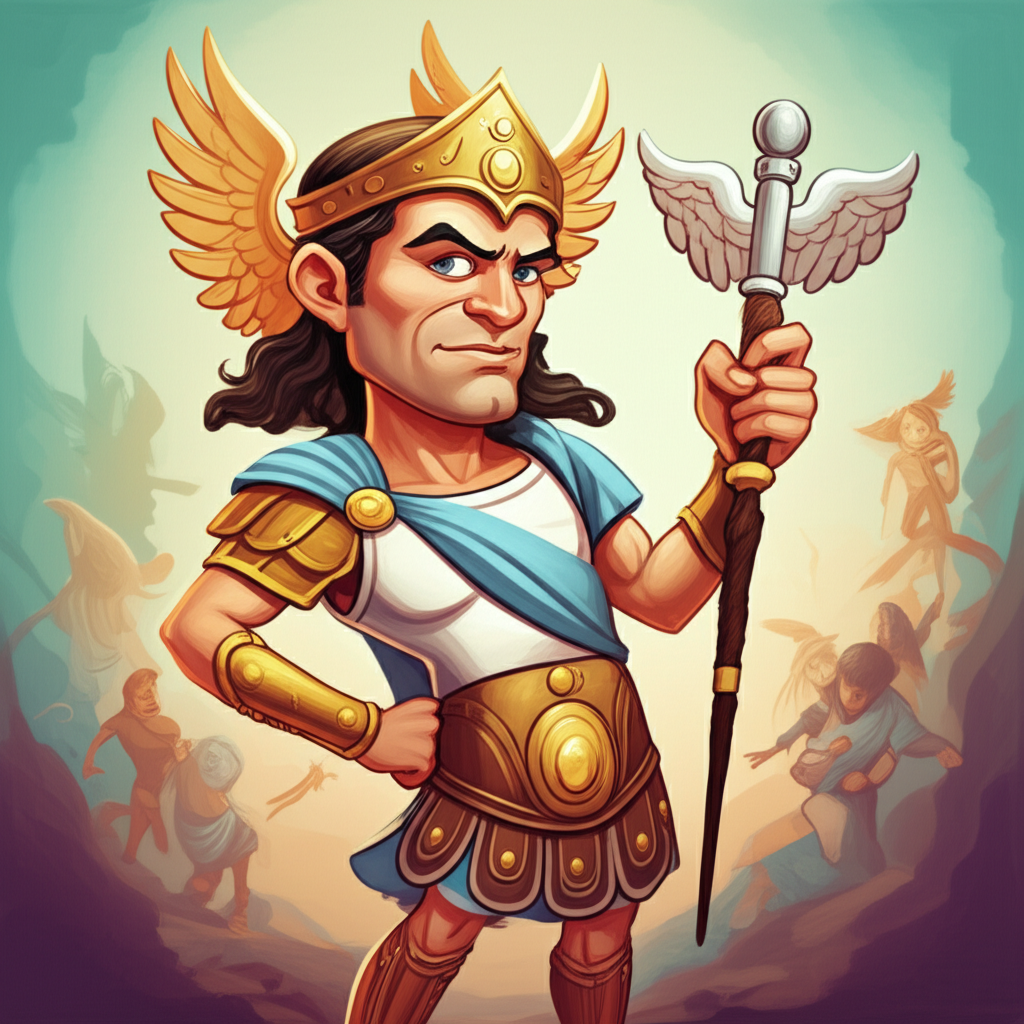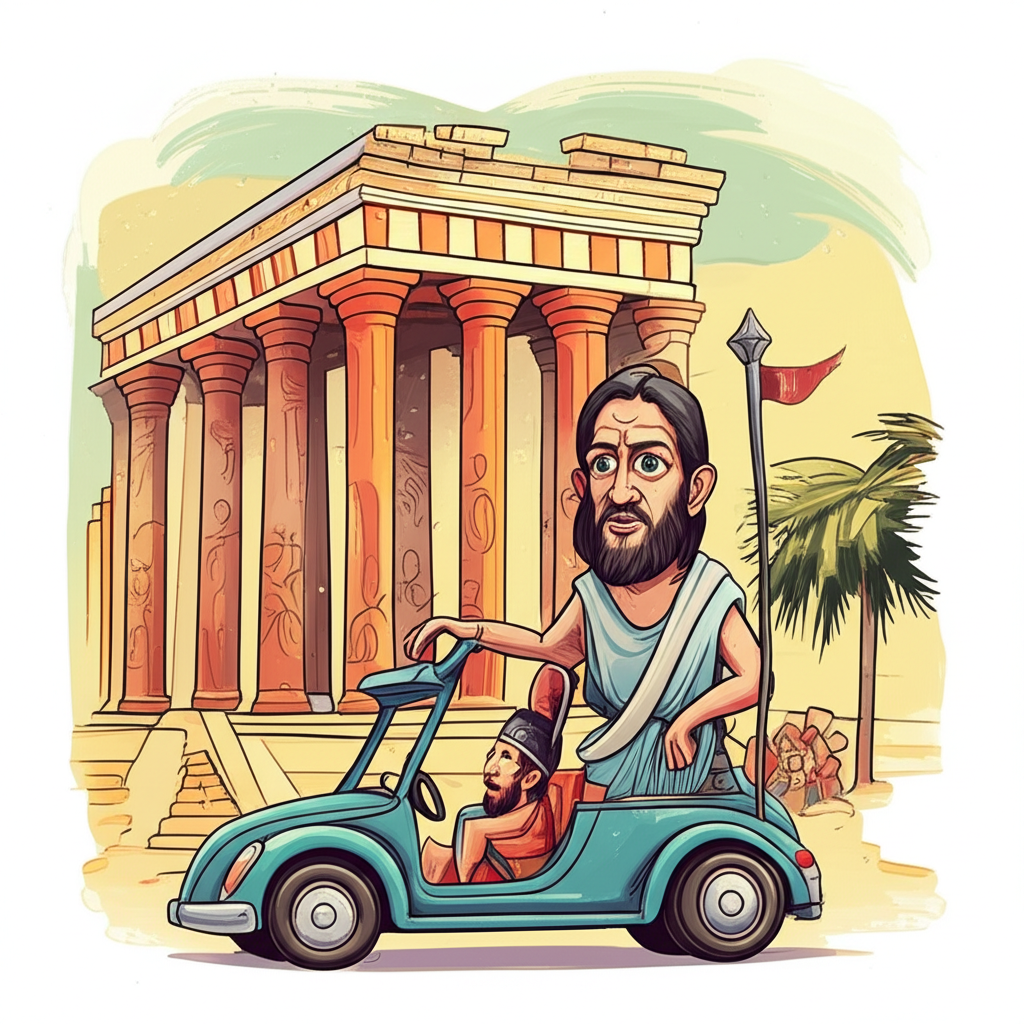
This is a story, a legend, passed down through generations by the ancient Greeks. It is a tale of gods and titans, of war and cunning, and of the vital role played by Hermes, the messenger of the gods, in securing the victory of the Olympians. This story is part of a rich tapestry of myths that helped the ancient Greeks understand the world around them and their place within it.
Origins and Cultural Background: The World of Ancient Greece
The myth of Hermes and the Oath of Titanomachy emerged from the vibrant culture of ancient Greece, a civilization that flourished from roughly 800 BCE to 600 CE. This era was characterized by city-states like Athens and Sparta, each with its own distinct laws, customs, and patron deities. The Greeks were deeply immersed in a world where the divine and the mortal were intertwined. They believed that the gods actively intervened in human affairs, influencing everything from the weather to the outcomes of battles.
For the ancient Greeks, the world was not a place governed solely by natural laws, but also by the whims and desires of powerful, immortal beings. They populated their world with gods and goddesses who possessed extraordinary powers, human-like emotions, and complex relationships. Their mythology served not only as a way to explain the origins of the universe and humanity but also as a framework for understanding morality, justice, and the challenges of human existence. These stories were shared orally for centuries before being written down, constantly evolving and adapting with each telling.
Character Description: Hermes, the Messenger God
Hermes, in Greek mythology, is the swift-footed messenger of the gods, known for his cunning, diplomacy, and ability to navigate between the divine and mortal realms. He is often depicted as a young, athletic man wearing winged sandals (talaria) and a winged cap (petasos), and carrying a herald’s staff called the caduceus, entwined with two snakes.
Symbolically, Hermes embodies communication, trade, travel, and boundaries. His winged sandals represent speed and agility, allowing him to traverse vast distances in the blink of an eye. The caduceus, often associated with medicine and commerce, signifies his role as a negotiator and mediator. While often portrayed as lighthearted and mischievous, Hermes possesses a serious side, acting as a guide for souls to the Underworld and a protector of travelers and merchants. He is a symbol of adaptability, resourcefulness, and the ability to bridge different worlds. He is also a trickster, often using his wit and cunning to outsmart others.
Main Story: Hermes and the Oath of Titanomachy
Before the reign of Zeus and the Olympian gods, the Titans ruled the cosmos. They were powerful, primordial beings led by Cronus, who had overthrown his own father, Uranus. Fearing a similar fate, Cronus swallowed each of his children as they were born, until Rhea, his wife, tricked him into swallowing a stone instead of Zeus.
Zeus grew up in secret, and when he came of age, he challenged Cronus for control of the universe. This sparked the Titanomachy, a devastating war that raged for ten long years. The Olympian gods, led by Zeus, fought against the Titans, who were entrenched atop Mount Othrys. The fighting was fierce and relentless, shaking the very foundations of the earth.
As the war dragged on, the Olympians began to despair. The Titans, with their immense strength and ancient power, seemed unstoppable. Zeus knew that he needed an advantage, something to tip the scales in their favor. He consulted with his wisest advisors, including his clever son, Hermes.
Hermes, with his quick wit and understanding of hidden paths, devised a daring plan. He knew that deep within the earth, imprisoned by Cronus, lay the Cyclopes and the Hecatoncheires, monstrous beings with immense strength and a hundred hands each. These beings had been imprisoned for their loyalty to Uranus. Hermes proposed to venture into the depths of Tartarus and convince them to join the Olympian cause.
The journey to Tartarus was perilous, fraught with dangers both seen and unseen. But Hermes, with his winged sandals and divine protection, navigated the treacherous paths and faced the monstrous guardians. He found the Cyclopes and the Hecatoncheires chained and despondent.
Hermes spoke to them, not with empty promises, but with a compelling vision of a new order, a world where strength and justice would prevail. He reminded them of the injustice they had suffered at the hands of Cronus and promised them freedom and a place of honor among the Olympians. He asked them to swear an oath on the Styx, the river of the Underworld, a vow that even the gods dared not break.
The Cyclopes and the Hecatoncheires, moved by Hermes’ words and the promise of vengeance, agreed. They swore an oath on the Styx to fight alongside the Olympians until the Titans were defeated.
True to their word, the Cyclopes and the Hecatoncheires proved to be invaluable allies. The Cyclopes, skilled craftsmen, forged Zeus’s thunderbolts, Poseidon’s trident, and Hades’ helmet of invisibility. The Hecatoncheires, with their hundred hands each, hurled massive rocks and uprooted trees, overwhelming the Titans with their sheer force.
The tide of the war turned. With the combined power of the Olympians, the Cyclopes, and the Hecatoncheires, the Titans were finally defeated. Cronus and the other Titans were cast into Tartarus, where they would remain imprisoned for eternity.
The Olympian gods, under the leadership of Zeus, established a new order, bringing justice and prosperity to the world. Hermes, the cunning messenger, was hailed as a hero for his role in securing their victory. The oath sworn on the Styx, facilitated by Hermes, had proven to be the key to their triumph.
Symbolism and Meaning: Order Versus Chaos
The myth of Hermes and the Oath of Titanomachy is rich in symbolism. The Titanomachy itself represents the struggle between order and chaos, the clash between the old and the new. The Titans, representing the primordial forces of nature, were overthrown by the Olympian gods, who represent a more ordered and rational world.
Hermes, in this context, symbolizes diplomacy, intelligence, and the ability to bridge divides. His role in freeing the Cyclopes and the Hecatoncheires demonstrates the power of persuasion and the importance of forging alliances. The oath on the Styx represents the binding nature of promises and the consequences of breaking them. The story may have represented the importance of strategic alliances and the power of cleverness in overcoming seemingly insurmountable odds. It could also be seen as a reflection of the social and political changes occurring in ancient Greece, as new forms of governance replaced older, more traditional systems.
Modern Perspective: Myths in Contemporary Culture
The myths of ancient Greece continue to resonate in modern culture, appearing in literature, movies, video games, and cultural studies. The story of the Titanomachy, and Hermes’ role within it, is often retold and reinterpreted in various forms. From Percy Jackson books to Immortals Fenyx Rising, elements of the Titanomachy, including the figures of Hermes and the Titans, are present, reminding us of the enduring power of these ancient narratives. In academic circles, these myths are studied for their insights into ancient Greek society, religion, and worldview.
Conclusion
The story of Hermes and the Oath of Titanomachy is a captivating tale from ancient Greece, a testament to the power of storytelling and the enduring appeal of mythology. It is a cultural artifact, a window into the beliefs and values of a civilization long past.
As Muslims, we understand that only Allah is the true Creator and Sustainer of the universe. We recognize these myths as imaginative stories created by ancient people to explain the world around them. These stories offer valuable insights into cultural heritage, imagination, and the human desire to understand our place in the cosmos, but we do not ascribe any divine power to the characters or events described.





